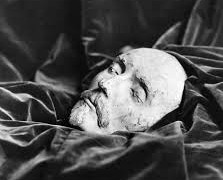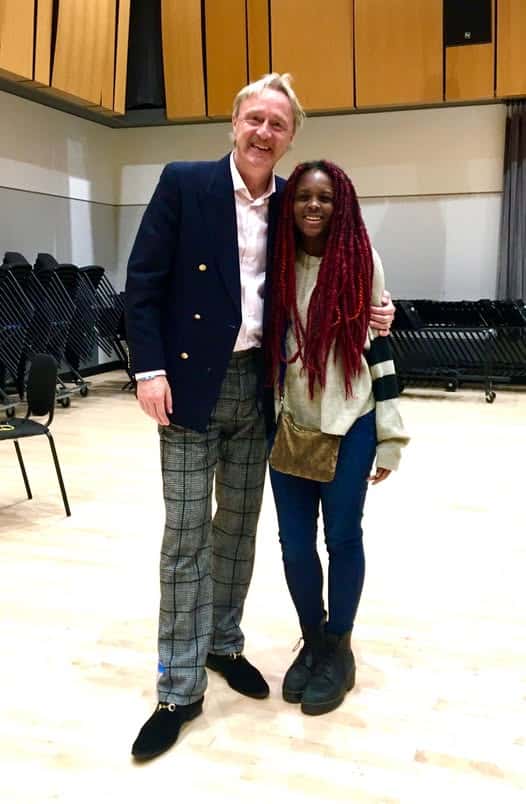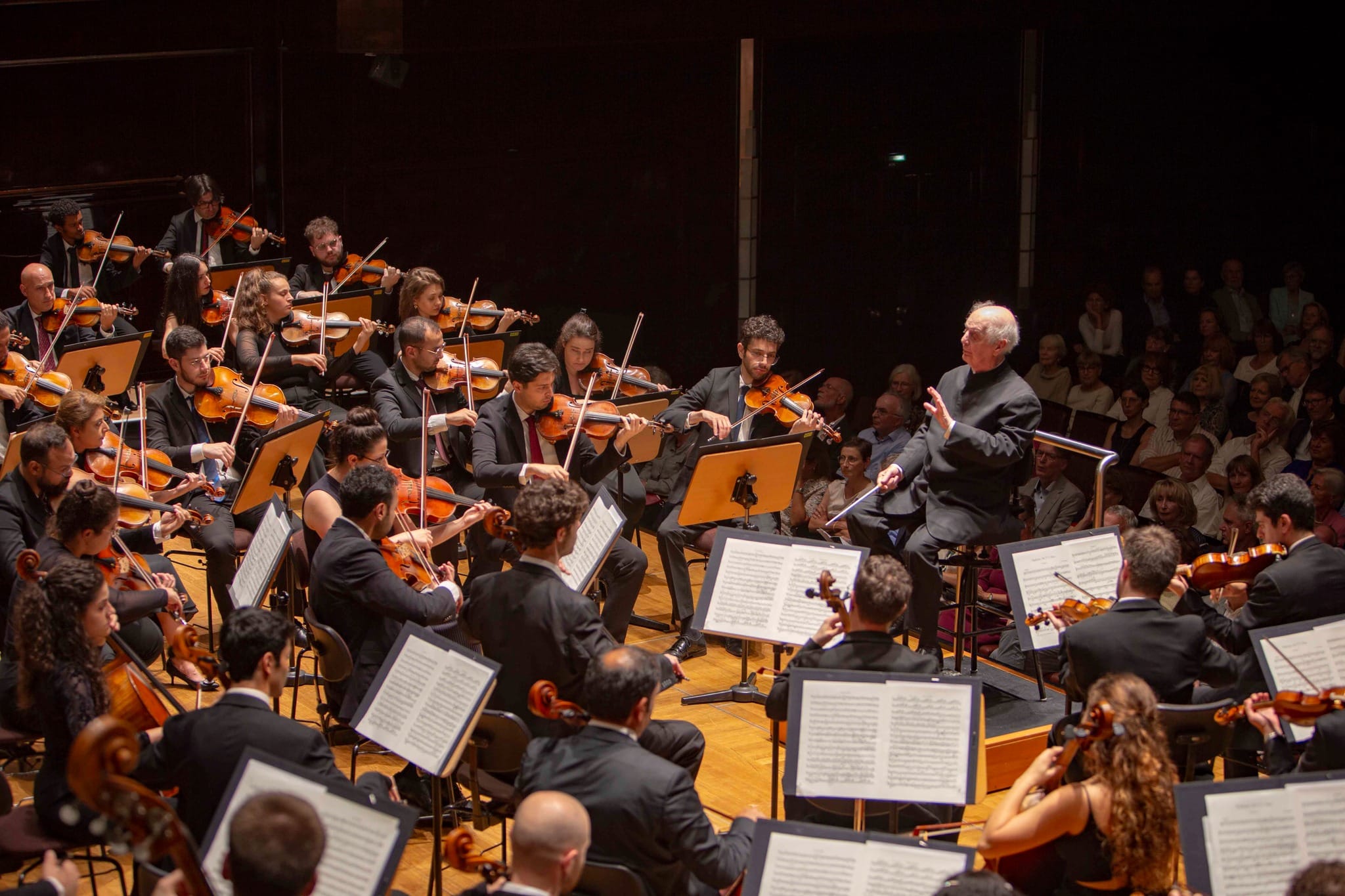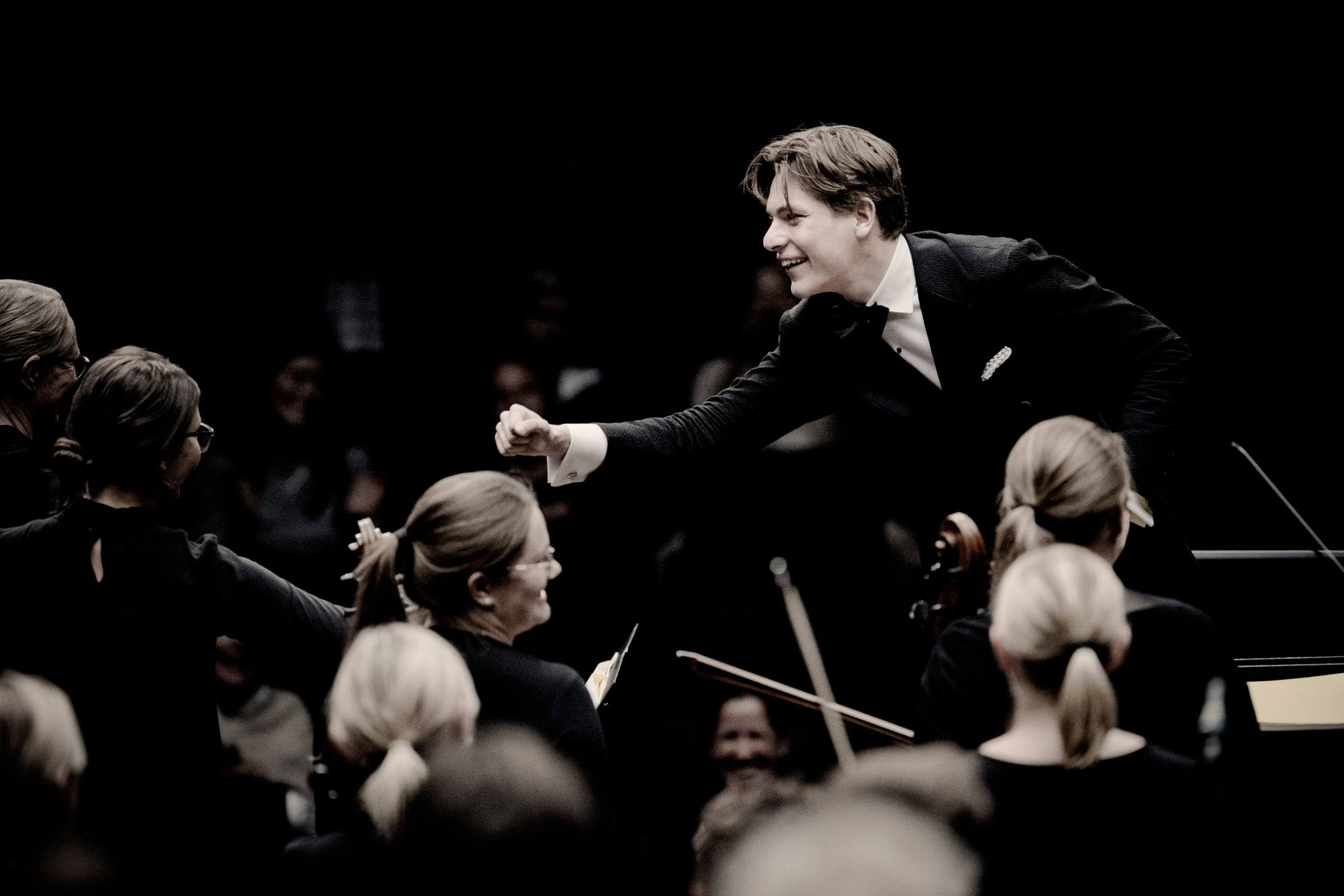Shocking stat: Four composers make up 24% of music played by major US orchs
mainA survey by New York singers’ agent Doug Schwalbe reveals that the leading North American orchestras are still desperately dependent on a tiny handful of dead white males.
Doug looks at performances by seven orchestras – NY Phil, LA Phil, Boston, San Fran, Toronto, Philadelphia and Dallas – since 2011.
He reports that Beethoven and Mozart accounted for over 15% of the 9,676 pieces performed.
That proportion rises to 24% when he adds Tchaikovsky and Brahms.
And you wonder why people have stopped going.

Contact doug@schwalbeandpartners.com to see the full charts.





“And you wonder why people have stopped going.”
It’s obviously more complicated than that. We’d need to see audience figures for the big warhorses compared with figures for the rest of the repertoire. If, as I suspect, the former do reasonably well, then the problem is that people who reliably turn up for the Beethovens and Mozarts don’t turn up as much for the rest of the season. The question then becomes: does an ensemble try to build a different audience altogether for that part of the season, or does it try to steer a middle way, mixing warhorses with less often played music?
What’s wrong with dead white men? They have done more for composition than any other group of people. Or do obvious facts make you hysterical?
Yes, I agree. I have been a dead white male for all my life which has aroused much resistance in certain quarters.
That’s true, but simply because old white men have been the dominant ones in power for ages. Don’t you think that if women were encouraged to compose from the beginning of the classical music tradition, we’d have so much more great music? Of course orchestras should play music written by the great dead white men, but I guarantee those men would be shocked to hear we don’t value new music much anymore as well. How would Brahms have felt if his orchestras only played Mozart? We can’t keep playing only the old warhorses for the next 200 years, that’s a guaranteed track to the death of orchestras.
What is really wrong is that NL is using this terrible term “dead white males”. This tells me that he doesn’t love this music at all. He is in it for something else but not for the music itself. Let’s play “dead white females” and see whether their music is really better only because they are women. ,-)
He said…She said…
Why not try the trash pedaled by Alma Shindler Gropius Werfel.
That is pretty extraordinary. I’m also surprised that those orchestras play that much Mozart (though we don’t know how much of the 15% is him). I’d have thought he’s largely been appropriated by the specialist early bands.
But still: that does leave 76% which isn’t by those four. There should be plenty of room for some creative programming…
Mozart hasn’t been appropriated (if that’s the word) by period-instrument bands in North America (alas) because there just aren’t enough period-instrument bands here yet.
Also, I would guess that the period-instrument musicians here would rather spend their time and energy not on Mozart (who gets plenty of play already) but on the pre-1750 rep that’s (a) mostly lesser-known and less overworked, and (b) just doesn’t work as well on modern instruments.
Play instead 50% Beethoven, Mozart, and Brahms and see what happens.
I’m sure only good things would happen- there is a hard wiring in the human psyche for tonic-dominant relationships. Most people might not cognitively follow the harmonic structure of music, but they feel the division of the octave and overtones and enjoy the consonant relationships thus formed. Perhaps it is escapism that we indulge in by listening to Mozart and Beethoven. But look how serialism was thoroughly rejected by mainstream audiences. The hierarchy of tonic-dominant relationship is devoid in this genre.
It is a bit more complicated than that….. The more music is organized along the first harmonics (octave, fifth, third), the easier the musical structure is ‘understood’, which is rather: ‘recognized’. But deviations from such patterns create interest, so the interplay of more or less consonant sounds are the stuff of interesting music. But that is only step one. Great music uses this interplay to create emotional experiences. How sound combinations create emotional experiences in listeners, is still a territory not quite udnerstood.
I propose the creation of a Federal Music Repertoire Committee. We could ask the Russians for help, they’re experienced in these things.
I don’t find this comment silly or idiotic, but of course I may be mistaken.
It would be interesting to know the same sort of figures for this side of the Atlantic (as well as to know which composers are represented in the 76% in the US). Anyone have the time or inclination to do the analysis? I gather from some concert programme planners that audience for works particular composers are less predictable than they once were, with sometimes surprisingly poor houses for ‘popular’ programmes and vice versa.
I am not sure the programmes matter at all, at least as it was before
If you take the three London orchestras (LSO, LPO, Philharmonia) then they play the odd concerto by Mozart and one-or-two pieces by Beethoven only. These two composers make up 3-4 percent of the repertoire they will play this season; and last season was similar. And Brahms and Tchaikovsky don’t add much more.
One of the odd things is that their chief conductors at the moments seem to specialize disproportionately in 20th century repertoire (Salonen) or Russian repertoire (Jurowski), while Rattle is hardly noted for the core 19th century or German repertoire (although he has a reputation in Mahler). At the LSO, Harding and Noseda are not noted for it either. In fact, it would take several years to get a complete cycle of Beethoven symphonies in London (even if we exclude his first two).
I’d be happy to send you the figures I have for North America. Please email me: doug@schwalbeandpartners.com.
If orchestras programed more Boulez and Stockhausen, kids would be running to the concerts in droves.
Yes, because they would immediately recognize their private life experience.
Nope. Neither Boulez nor Stockhausen even count as contemporary music anymore,
If orchestras programmed more Reich and Pärt and John Luther Adams and Julia Wolfe and Nico Muhly and Caroline Shaw, “kids” (well, younger adults) might come to concerts more. (It seems to work in L.A., for what that’s worth.)
Or they might prefer to go hear percussion groups or vocal ensembles or string quartets play those composers instead, in less formalized settings and smaller venues. (That seems to be how it’s going in NYC.)
Yet even some of these ‘contemporary’ composers are not very contemporary and there are lots of great composers that don’t eve net a chance. Different, less formal, venues are certainly desirable – even people as old as me appreciate that and I’ve long thought that there is too much formality about much ‘classical’ music performance. We shouldn’t, ether, just be thinking about orchestras, but about the full range of ensembles that engage with both old and new works.
“Yet even some of these ‘contemporary’ composers are not very contemporary”
What do you mean by ‘contemporary’? They are all currently alive, producing new work, and attracting musicians to perform their music and audiences to hear it. If that’s not contemporary, I don’t know what it.
Yes, they are all alive and some are quite young, but I suppose I was trying to say was that the older ones are not truly innovative now even though they are still producing new work and I am concerned that a lot of new composers don’t get the chances they deserve. For example, I am very keen on Steve Reich’s music and am glad it is played a lot – I am going to a performance of Different Trains at a train station next eek and I’m sure it’s attracting a different audience from a performance in a concert hall – but it could well be argued that Reich is now an establishment figure.
Certainly, Reich and Glass and Pärt are more or less establishment now; so, arguably, are John Luther Adams and Nico Muhly; if Julia Wolfe and Caroline Shaw aren’t yet (what with MacArthur grants and Pulitzers and such), they will be soon.
My point, in this particular subthread of comments, was just that, at least in a few big cities here in the States, those composers do attract an audience that’s not old and gray – in a way that Mozart and Brahms seem not to do anymore.
In itself, it is a most remarkable find when compared to the other arts. Factors contributing to this narrowing are manyfold, of which I would mention: 1) performers know the pieces so rehearsel time can be short = less expensive; 2) audiences know beforehand that they like it, they want to have the same experience again; 3) the lack of ‘great composing talents’ after WWII with an accessible language; 4) the destruction of audiences’ goodwill by modernism which created the myth of ‘ugly new music’ (there’s a lot which is really good & beautiful); 5) the over-heated orchestral culture with rising costs, busy schedules, tours, big overhead; 6) the lack of proper information in the media and of music education, pushing orchestral culture into the margins of private pastimes for elites.
The Future Symphony Institute, an international think tank, tries to contribute to solutions for classical music’s problems: http://www.futuresymphony.org
“And you wonder why people have stopped going”
That’s NOT the reason people have stopped going: The problem is that, due to budget cuts, they stopped running shuttle buses between the cemeteries and the concert halls.
While being popular with symphony orchestras may be nice, I tend to think Mozart, for one, would be horrified to realize that big bands were playing his music in huge windowless halls with excruciating acoustics, and have been comfortable repeating that mistake over for two hundred years…:-0
I agree, Pamela! Have said that many times over.
A famous American football player who once started at running back for the Dallas Cowboys of the NFL put it in very clear terms. ” I asked Darrell Royal, the coach of the Texas Longhorns, why he didn’t recruit me to play college football at Texas. “He said,”Well Walt,we took a look at you, and you weren’t any good.” – Walt Garrison/Oklahoma State
I don’t know why you people keep beating a dead horse. The concert going public has taken a look at the remaining 76% of the concert repertoire and decide it isn’t any good.
Football is something different from classical music. And what audiences think or not think is impossible to research in such a way that general conclusions can be drawn, because there are so many different reasons people may have to go to a classical music concert. (One of them is to avoid your husband watching a football game at home.) There are no rules for getting audiences to concerts, that is why giving concerts is a risky business and it always was.
The very first public performances of Beethoven’s 5th and 6th symphony, together with the 5th piano concerto, all on one evening, was a flop – in spite of B already being world famous and wildly popular. Probable reasons: it was cold (December) and the players underrehearsed with cold, stiff fingers.
I once organised an international chamber music festival of a week in a middle-sized, cultured town, and had the greatest trouble to get audiences in, in spite of extensive publicity, because after a wet summer the first week of sunny weather in august was exactly at that time.
The famous manager & promotor Sol Hurak: ‘If the audience don’t want to come to the concert, there’s nothing I can do to stop them’.
I complained to a conductor once about the constant replaying of the war-horses. How many times do I have to sit through the Beethoven 9th? I’ve heard it before. But he reminded me that that’s because of my age – that there are younger people who are hearing it live for the first time in their lives. So while those of us of a certain vintage have heard Brahms, Beethoven, Tchaikovsky and Mozart for 50-60 years, those 20-somethings haven’t. I don’t attend many concerts anymore when it’s stuff I’ve heard too many times, but I do attend (and travel long distances) to hear something that’s rarely played, such as the Schmidt 2nd at the 2015 Proms, the Gliere 3rd in Philadelphia a while back. Will contemporary music bring in younger people? Nope.
I’ve heard that “first time” thing a lot. Guess what? There are LOTS of pieces young people would hear for the first time.
Curious, no one mentions Mahler???????
What about Berg, Weber, Hindemith? When was the last time you heard them?????
Even Hindemith’s once popular Mathis der Maler Symphony has virtually disappeared. Nor do we much hear even older pieces like the Franck or Cherubini Symphonys. I’ve heard them once each in many years of live concert listening.
The real question to me is why does every concert have to have some damn concerto with some damn “name” soloist? And those limited to the usual suspects, all of them overplayed. If Rach 2 or 3 is on a program I will stay home. Not because they’re not good pieces but because they are played to death. Just once I’d like to hear the Rubinstein 4th or S-S 3. Good worthwhile pieces that used to be heard are never heard anymore. Overtures are almost unheard of on serious concert programs. And when they are it will be one of two Beethoven Leonores, usually #3 or an overplayed Mozart. But not a trace of #1 or Cherubini’s Anacreon, once frequently played by the likes of Toscanini, Furtwangler and Mengelberg. Shorter concert works have been all but banished like Franck’s Les Eolides or Chasseur Maudit. Try and find a Liszt tone poem other than Les Preludes or the occasional Mazeppa.
True. Franck’s ‘Chausseur’ and Liszt’s ‘Orpheus’ are masterpieces, as are Franck’s ‘Variations Symphoniques’ and Fauré’s ‘Ballade for piano and Orchestra’. It all comes down to the creative thinking of music director and staff.
On the other hand, the variety and depth of the emotional landscape offered by many ‘warhorses’ make different interpretations possible which renew the music time and again, making them new and fresh again and again. The art of performance is, after all, presenting a work as if it has been composed yesterday.
We need more composers who can offer a comparable emotional range.
Where can I see the whole list of pieces performed?
I’d be happy to send you the charts, as well as a list of the composers whose pieces were performed. Please contact me at doug@schwalbeandpartners.com.
Feel free to also credit the uninviting atmosphere cultivated at many classical performances. No clapping — hell, you even get castigated for a damn cough. Like you’re not supposed to be human.
The silence is meant to make it possible to hear everything that is being played. In a football stadium it’s about what you see, in a concert hall about what you hear, that’s why.
FYI Toronto is in Canada 😉
It says “North American.” FYI, Canada is in North America. 🙂
I wonder what would happen if you substitute Ravel or Richard Strauss for Brahms. I’m sure on average Brahms is more popular, but those two wrote a lot more orchestral works. You might get a different picture if you count performance time rather than item, as I assume this count does. In which case Mahler would probably factor in, but instead probably counts the same as two Mozart overtures.
I long ago switched from Symphony Orchestras to small ensembles who specialise in different genres or composers or periods – in my city they are all top musicians and present smaller, often intimate, concerts that have introduced me to many ‘dead white males’ works I had never heard of. Plenty of people want lots of Brahms and Beethoven. Others of us, plenty in fact, go elsewhere. Tickets are a fraction of the price, they often serve wine and cheese after and there is a chance to mix with the musicians, and because they aren’t in the major city venues parking is hassle free. It’s all horses for courses.
That’s how it should be done…. next to the big orchestras in the big concert halls, variety and diversity.
Perhaps this is, at least in part, a manifestation of the Pareto Principle, aka the 80/20 rule. Most of the best of anything is produced by a very small group – almost by definition.
Be glad – in South Africa (apart from Cape Town and maybe Johannesburg) we are happy about even the most over-played Mozart or Vivaldi. Sigh…
My observation is that any program containing an unfamiliar or contemporary work will have one or more of these composers comprising the rest of the program. This serves as an “antidote” to the work that might depress ticket sales.
Looking at the NSO programs for 2016-17 this rule was strictly followed.
When we combine these factors:
– Standard instrumental forces
– Limited rehearsal time required
– Standard Violin/piano concertos (for star soloists)
– “antidote” program effect
– inertia
that is what you get.
I wish I had an easy way to access National Symphony Orchestra programs over the last 5 years – would guess our BMI (Beethoven Mozart Index) is pretty high.
Before WWII, unfamiliar works and premieres were looked forward to with anticipation by audiences. Also when an unfamiliar, or new work, was disappointing, it did not diminish future interest. The reason is, that unfamiliar/new works were expected to be part of the same performance culture in terms of musical language, also where the boundaries of this language were stretched: the concert performance of Stravinsky’s Sacre a year after the scandalous ballet performance in 1913 was a hughe success, with the composer being carried on the shoulders of a postconcert crowd through the streets of Paris. Many post-WWII new/unfamiliar works however, were promoted as new, avantgarde, but in reality operated in a quite different field: crossing the boundaries of the performance culture. This misunderstanding created the myth of ‘ugly new music’ and the separate culture of ‘avantgarde’ with aggressive propaganda and performance requirements very different, on a fundamental level, from those of the central performance culture. And this blew-up audiences’ goodwill. Ernst Roth, former director of the Viennese publisher Universal Edition and later-on of Boosey & Hawkes, who knew the big shots of pre-war composers from close and observed the Schoenbergian avantgarde trend with scepsis, predicted this in his memoirs (which are on internet: http://www.musicweb-international.com/Roth/index.htm ).
The danger of hanging an unfamiliar work between two peaks of the canon repertoire, is that such work can hardly be expected to compete with them, further diminishing interest in the unfamiliar.
But it is also true that good programming – i.e. mixing familiar with unfamiliar – works very well if the music director knows how to choose the unfamiliar, and makes sure that no works are chosen which do not really belong to the performance culture, and thus over some time builds-up a relationship of trust with his audience. And this in combination with wise and extensive marketing so that audiences are made curious instead of suspicious.
The race of conductors carry most of the responsibility, and it would be advantageous if they would really be interested in the music they present in the first place, instead of considering the repertoire – any repertoire – merely as a vehicle for their career. It is striking to see how rare this is, in the light of all the threats that surround classical music and especially, the orchestral culture.
Mr. Borstlap I think in this particular case your analysis doesn’t capture what is happening in the USA. You typically cite the avant-garde with reference to Schoenberg or Boulez but I think that isn’t much of a factor anymore in most USA cities. The NSO unfamiliar works requiring safe companion works on the program are the wanton Marsalis violin concerto, a mason bates piece (composer in residence who is also a hip hop DJ) and two pieces by Christopher Rouse (what I have heard is neoromantic to my ears). Baltimore is similar (eclectic new works).
I wonder if your general view is more applicable to Netherlands or Germany or places where composers apply for grants from the state.
I know there is a difference between the two sides of the pond, but in general the dynamics of programming will be quite similar. The point is, that the performance culture with its aesthetic aspirations is kept intact, it is the orchestra’s profile. It seems to me that on the American side, the ‘idea’ of ‘avantgarde’ has eroded much more than in Europe, with indeed a much more eclectic programming. However, including ‘cross-over’ and pop orientated works carry the same danger as modernism, they don’t belong to the performance culture. But well, there are publishers producing pulp to be able to pay for their poetry and literature series, so maybe it is not too bad a thing. It is a matter of endurability.
Well, that’s why I don’t go.
I too would like to hear what happens to the quoted numbers if Mahler IS factored in. To my knowledge, Mahler’s works always sell. I was surprised by Tchaikowsky — unless it’s the holiday season.
There is NOTHING preventing women from being great composers. Nothing at all!
Yes, it is obvious that such narrow programming stops anyone of any sophistication from wanting to attend concerts. Catering to lower-brow tastes with stale warhorses and the occasional avant-garde torture is a great way to kill orchestras and the love of music.